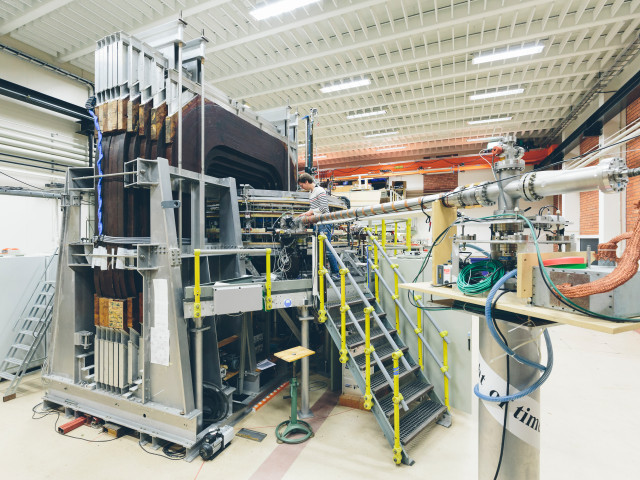Introduction to fluorescence, physical description of absorption and emission processes, fluorescence markers and their characteristics, environmental effects / fluorescent molecular sensors, other photo-induced non-fluorescent states of fluorophores, polarization and molecular rotation measurements, Resonance energy transfer (FRET) ultra-sensitive fluorescence spectroscopic and fluorescence microscopic techniques including single-molecule spectroscopy and fluctuation spectroscopy methods, fluorescence spectroscopic applications in biology, medicine and drug development.
SK2537 Fluorescence Spectroscopy in Biomedical Research 7.5 credits

Information per course offering
Choose semester and course offering to see current information and more about the course, such as course syllabus, study period, and application information.
Information for Autumn 2025 Start 27 Oct 2025 programme students
- Course location
KTH Campus
- Duration
- 27 Oct 2025 - 12 Jan 2026
- Periods
- P2 (7.5 hp)
- Pace of study
50%
- Application code
51022
- Form of study
Normal Daytime
- Language of instruction
English
- Course memo
- Course memo is not published
- Number of places
Places are not limited
- Target group
- No information inserted
- Planned modular schedule
- [object Object]
- Schedule
Contact
Course syllabus as PDF
Please note: all information from the Course syllabus is available on this page in an accessible format.
Course syllabus SK2537 (Autumn 2022–)Content and learning outcomes
Course contents
Intended learning outcomes
After passing the course, the student should be able to:
- Explain the basic physical mechanisms of fluorescence generation.
- Explain how the interaction between biomolecules and electromagnetic radiation as well as environmental effects can generate differences in the measured fluorescence parameters, and how these differences can be used to monitor biomolecules and their interactions.
- Explain the physical principles of the most important fluorescence techniques in the field of biomedical research, and the type of questions these techniques can be used to answer.
- Based on knowledge of these techniques and their physical principles, be able to describe and justify which factors limit their performance, and how obtained measurement results are evaluated.
- Explain, discuss and assess the potential of key parts in the latest developments in the field of fluorescence spectroscopy.
Literature and preparations
Specific prerequisites
Completed degree project at the undergraduate level in technical physics, medical technology, biotechnology or chemistry.
English B / English 6
Literature
Examination and completion
If the course is discontinued, students may request to be examined during the following two academic years.
Grading scale
Examination
- LAB1 - Laboratory work, 1.5 credits, grading scale: P, F
- PRO1 - Project, 1.0 credits, grading scale: P, F
- TEN1 - Written exam, 5.0 credits, grading scale: A, B, C, D, E, FX, F
Based on recommendation from KTH’s coordinator for disabilities, the examiner will decide how to adapt an examination for students with documented disability.
The examiner may apply another examination format when re-examining individual students.
Examiner
Ethical approach
- All members of a group are responsible for the group's work.
- In any assessment, every student shall honestly disclose any help received and sources used.
- In an oral assessment, every student shall be able to present and answer questions about the entire assignment and solution.